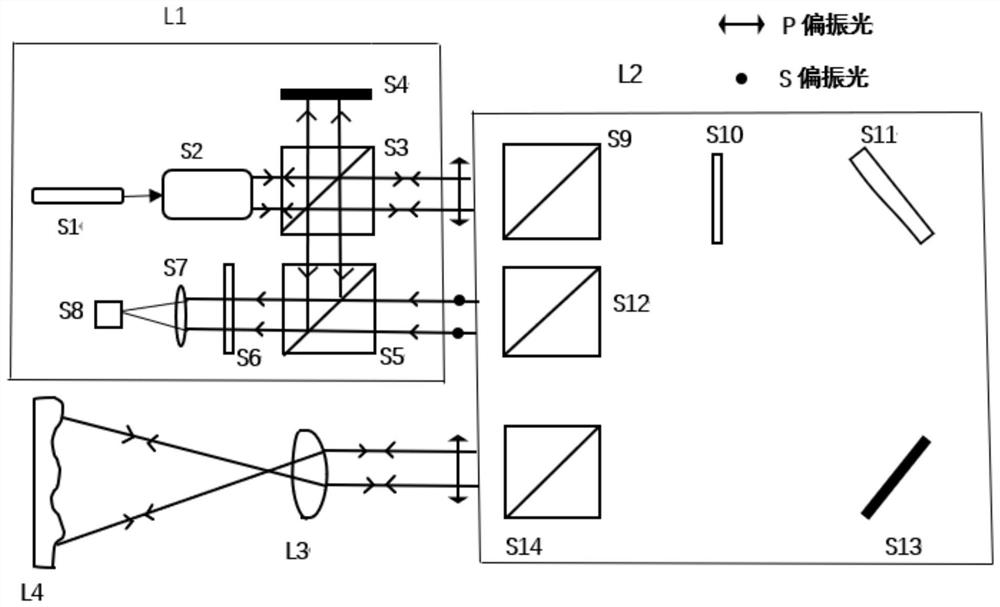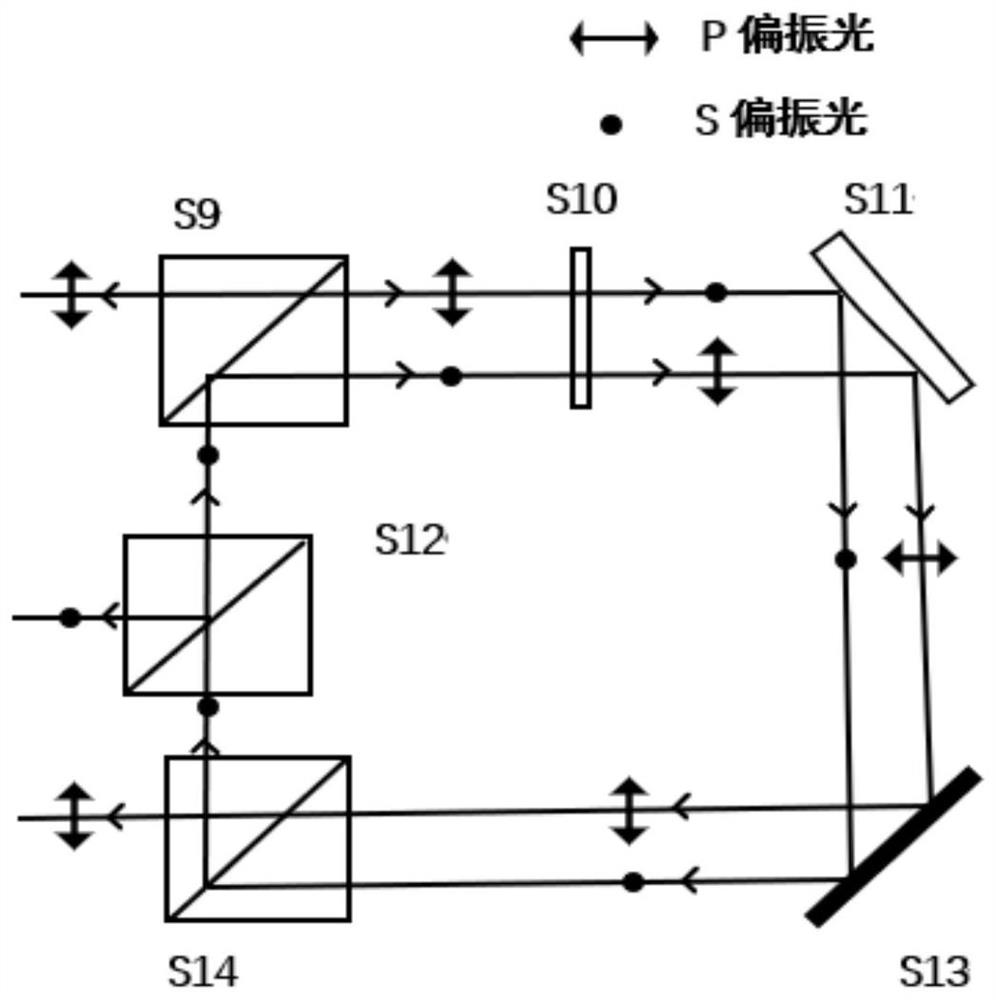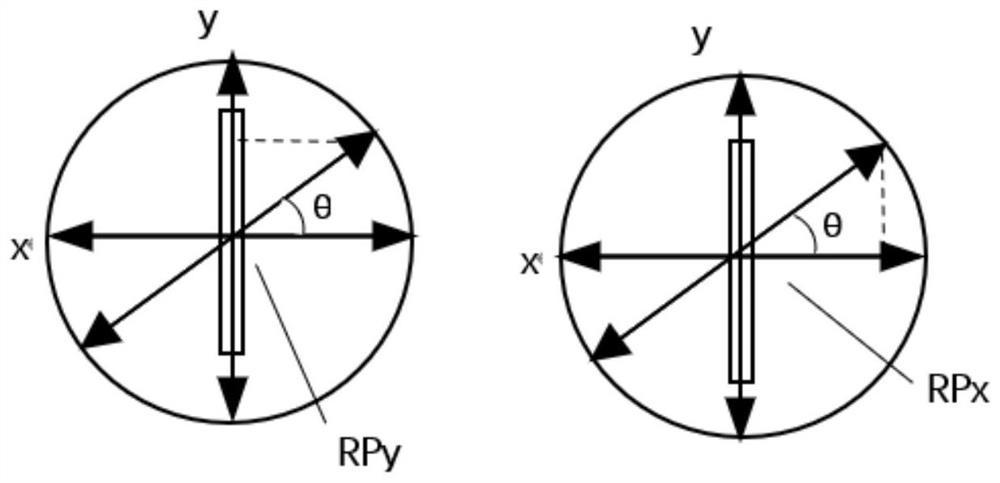Self-adaptive compensation ring cavity device and method for free-form surface interference detection
An adaptive compensation and interference detection technology, applied in the field of optical detection, can solve the problem of high cost and achieve the effect of low dynamic range
- Summary
- Abstract
- Description
- Claims
- Application Information
AI Technical Summary
Problems solved by technology
Method used
Image
Examples
Embodiment
[0045] Examples of the self-adaptive compensation annular cavity device and method applied to free-form surface interference detection according to the present invention are described as follows.
[0046] The measured free-form surface L4 is an unknown free-form surface on a flat base, with a diameter of 24mm, and its irregular shape deviation is obtained by mechanical extrusion.
[0047] figure 1 It is the diagram of the self-adaptive compensation ring cavity device for free-form surface interference detection. The laser wavelength is λ=632.8nm. The beam splitter S3 divides the 20mm collimated beam transmitted by the beam expander S2 into two parts, one of which is reflected by the first beam splitter S3, in order to ensure the contrast of the interferogram received by the detector in the final detection system, the beam splitter The reflection / transmission ratio is 0.5:0.5, 50% of the light energy is reflected by the first beam splitter S3, and the reflected light returns a...
PUM
 Login to View More
Login to View More Abstract
Description
Claims
Application Information
 Login to View More
Login to View More - R&D Engineer
- R&D Manager
- IP Professional
- Industry Leading Data Capabilities
- Powerful AI technology
- Patent DNA Extraction
Browse by: Latest US Patents, China's latest patents, Technical Efficacy Thesaurus, Application Domain, Technology Topic, Popular Technical Reports.
© 2024 PatSnap. All rights reserved.Legal|Privacy policy|Modern Slavery Act Transparency Statement|Sitemap|About US| Contact US: help@patsnap.com










